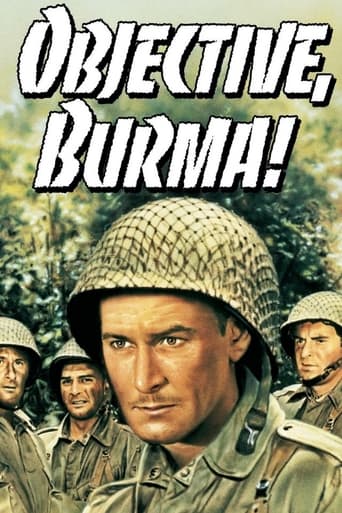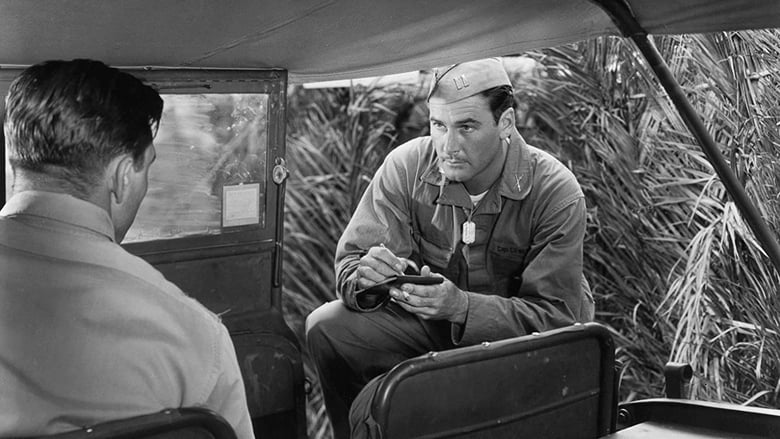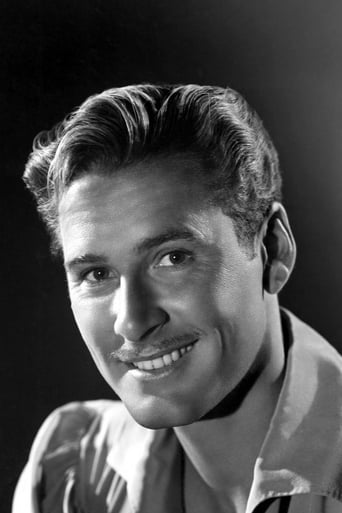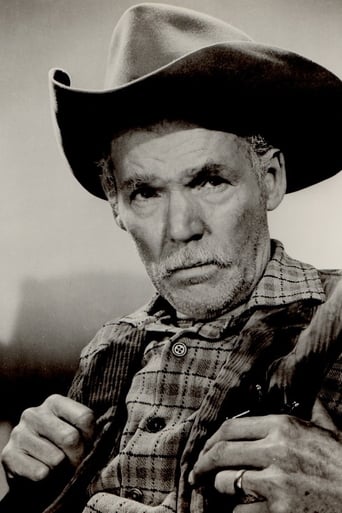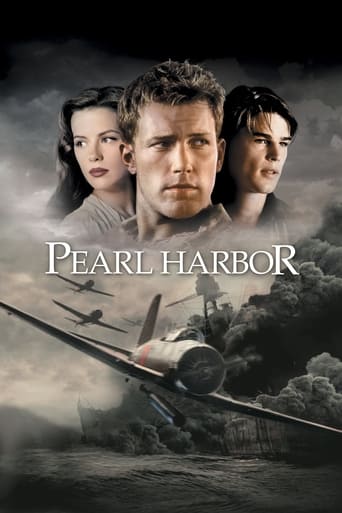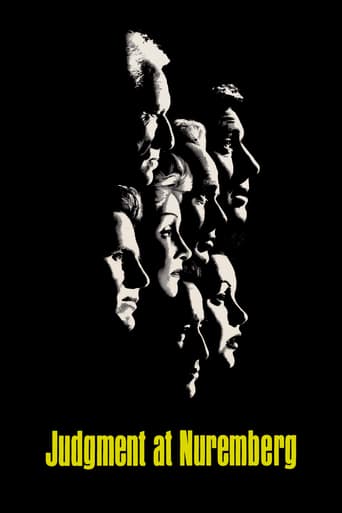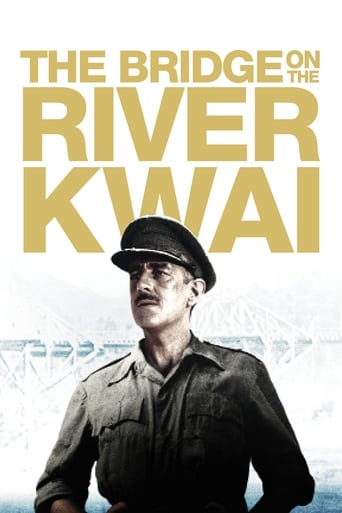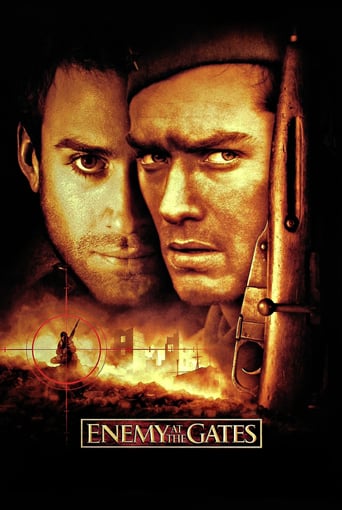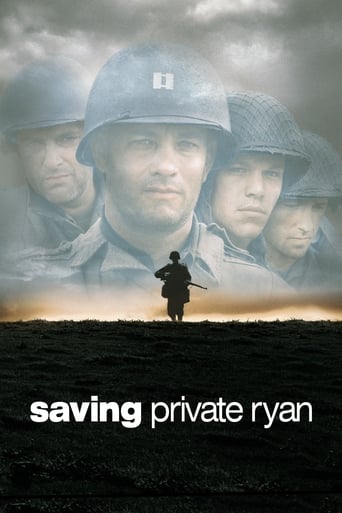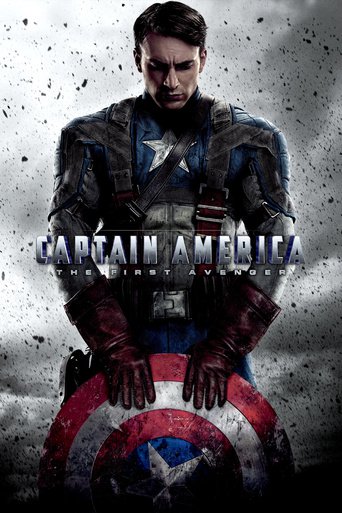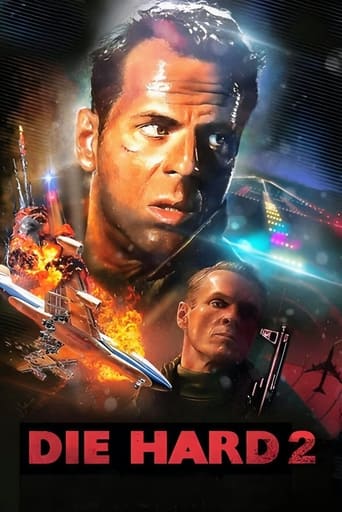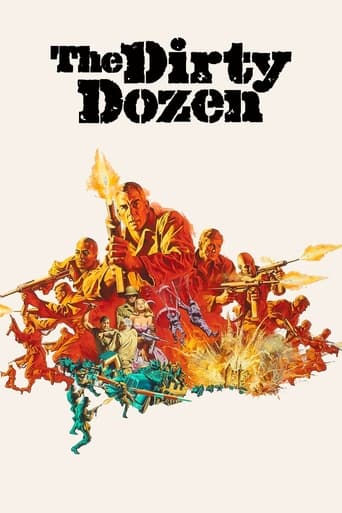Objective, Burma! (1945)
A group of men parachute into Japanese-occupied Burma with a dangerous and important mission: to locate and blow up a radar station. They accomplish this well enough, but when they try to rendezvous at an old air-strip to be taken back to their base, they find Japanese waiting for them, and they must make a long, difficult walk back through enemy-occupied jungle.
Watch Trailer
Free Trial Channels
Cast


Similar titles
Reviews
What a waste of my time!!!
the audience applauded
It’s fine. It's literally the definition of a fine movie. You’ve seen it before, you know every beat and outcome before the characters even do. Only question is how much escapism you’re looking for.
The movie really just wants to entertain people.
Objective Burma – Is one of my favorite movies. The inspiring leadership found by Captain Nelson (Errol Flynn) is great. I love the part where Gabby (the comic relief guy) looses his water purification tablets. Captain Nelson orders Gabby to use his. Later on, Gabby says " he would follow him into the mouth of a cannon". Captain Nelson also follows orders even when they do not make sense. Going deeper into enemy territory without knowing why. When they reach their deserted destination he says "What did you expect to find up here, anyway? I don't like this any better than you do. But we had orders to come here, and we'll stay here if we rot waiting.". Some of the footage is actual WWII footage (a little grainy).Some Phrases and terms used at times politically incorrect (by today's standards) , but it reminds me of the attitude back in those days. We had an enemy.I was never in the Military, and I appreciate the tactical military scenes. Some scenes that would probably be skipped in todays movies (like watching the soldiers bury their parachutes and supply boxes or lining up in order of the jump and double checking their parachute chords). This movie does not focus on the toughness of a particular person (no Rambo type here). Soldiers with specific duties and responsibilities working together on a mission. Great leadership, but no Super Heroes.The Parachute scenes with major air drops are spectacular.
That line from Errol Flynn to Henry Hull may seem a little odd standing alone, but it set the stage for what was to follow the opening sequence of this film. The time was January, 1944. The place was an American base in Assam province of extreme northeast India. The occasion was the first American mission into northern Burma to launch the allied offensive to retake Burma from the Japanese. This specific mission is fictitious, but it portrayed with stark reality the American involvement in the China-Burma Theater. And the extreme rigors and hazards of jungle warfare. American guerrilla units served with Indian and Burmese forces to fight the invading Japanese. In February, 1944, the famous deep-penetration force of Merrill's Marauders would march into northern Burma to attack and disrupt the Japanese. Other very good World War II films, all produced after the war, cover various true aspects of the war in Burma and China ("Merrill's Marauders," "Never So Few," "Flying Tigers").Back to my opening line, above. Flynn's character, Capt. Nelson, is talking to Hull, whose character is a reporter named Mark Williams. The reporter was chosen by lot among the press pool, and was given permission to go on this mission with Nelson's platoon. He is an obvious misfit for such a mission, although Nelson doesn't deride him directly. Rather, he points out the age differences of the paratroopers, and their conditioning and training. "This isn't a job for you; it's a young man's job. Do you know how old the colonel is in there? Thirty-four! You know how old our commanding general is? Thirty-seven! Young men, all of us. We've got to be. You know why? I'll give you two reasons: we jump out of planes and guys shoot at us. It isn't exactly healthy, unless you're young enough to take it.""Objective Burma" is an excellent movie in all respects. The direction, camera work, acting and other aspects are first rate. So many others have commented on the reality of the setting, the believable jungle appearance, the equipment, and the cinematography. I noticed some other aspects of reality not mentioned in the reviews I read. As a former paratrooper, I appreciated the detail and accuracy of preparation for the mission, the equipment checks before enplaning, the pre-jump drill and the jump. All the other war films I've seen with airborne (paratroop) operations show the jump without much attention to the procedures leading up to it. One little quirk was the reference to the jump zone. By the 1960s, I think jump sites were universally called "drop" zones. My dad served in World War II Europe in the Amy. Three brothers and I are all vets of the Cold War and/or Vietnam. One was a gyrene (Marine) and three of us were Airborne. While both types of combatants have traditionally been among the best trained and physically fit of American troops for war, we sort of note a couple of general distinctions. The Marines tend to be bigger, brawnier and more muscular for scaling down ship's ladders and fast and furious beach assaults. Their milieu is mostly direct, frontal assaults of force. The paratroopers tend to be muscular but of more slight build. Rather than the short-staged frontal assaults, they are trained for long-distance and physical endurance missions. They drop behind enemy lines and often have many miles to cover with assaults and combat in all directions. Both types of fighting forces are trained for, and capable of bearing long periods of hardship in terrain, climate and physical endurance. That leads to the anomaly of allowing the war correspondent to go on the mission. It's inconceivable that the brass would have Okayed an untrained 55-year-old civilian to jump from a plane and go on this jungle mission. Only because of the physical stamina needed for such a mission, as Nelson referred to in his discussion with Williams. Be that as it may, when the hoped for plane pickup the second day didn't succeed, we soon begin to see how the older reporter's strength gives out. Capt. Nelson's words to him prove true when Williams dies of exhaustion. One last note of interest. Did these filmmakers have real insight or what? Remember, the movie was made in 1945, during the war. At the beginning of the movie, a jeep takes film from the reconnaissance plane to a lab for developing. The sign at the lab reads "United States Air Force, Aerial Photographic Section, Field Laboratory." The U.S. Air Force wasn't constituted as such until 1947. Before that, our land-based military air power was part of the Army. At the start of WWII, it was known as the Army Air Corps (just as the Marine Corps comes under the U.S. Navy). About midway through the war, the air combat units were separated from the material, supply, and training contingent, which remained the Corps; and the combat units became the Army Air Forces. So, this early designation of U.S. Air Force in a 1945 movie was well ahead of its time. Is it possible that the military advisers to Warner Brothers expressed their predictions and the studio ran with the name change in the film? That only adds to the luster and top quality of this film in being on top of the action.
War films made during World War Two changed distinctly as the conflict wore on. At the beginning there were idealistic flag-wavers, feature-length recruitment ads. Then there were pictures about endurance and perseverance, designed to keep everyone's spirits up. In the final year of the war, when victory was certain yet the full cost and horror of it all was known and keenly felt, war movies began to take on a dark and bitter edge. Among the darkest and bitterest of them all was Objective Burma, released just a few months before the defeat of Japan.The story of Objective Burma, which gave writer Alvah Bessie his only Oscar nomination, involves a mission deep in the jungle which goes entirely according to plan, all except for the pickup of the men to get them back to base. The situation you then have is a group of soldiers stranded in a jungle swarming with hostile Japanese. What results is an incredibly tense story in which the hope is not one of victory but simply one of survival. It really makes a great basis for an action movie, because like a good horror flick it elicits a kind of thrill through the continual sense of danger. The characters are fairly one-dimensional GI stereotypes – cheeky, earthy, working class guys – that you can see in any cheap war flick, but this in a way adds to the horrific and harrowing impact of many of the later scenes. It soon becomes pretty clear that the "Burmese dancing girls" that one of the men jokingly refers to in an early scene, are not going to make an appearance in this kind of war film.Of course, it can only work if we the audience feel immersed in that danger. This is where director Raoul Walsh comes in. Walsh was really adept at this sort of thing, and strives to constantly give us a feel of the soldiers' plight. His every shot seems composed to give us a sense of both the vastness and the oppressive closeness of the environment. Often he uses point-of-view shots, for example putting us in the position of a GI peeping out of the bushes at a passing Jap patrol. At other times he takes a god-shot, looking down on the pitiful band wending its way through the undergrowth. There's a great use of sound design, with various animal noises making eerie laughing and screeching noises. What is important too is Walsh's focus on faces. In a movie where, from a distance, every uniformed man looks alike, an occasional attention grabbing shot of some very individual expression helps to underline the sense of this as a human tragedy. As the situation becomes more and more desperate, Walsh literally darkens the screen, with the impressive James Wong Howe cinematography getting ever more shadowy.You couldn't have made Objective Burma at the height of the war. It's simply too bleak. It would be useless as recruitment propaganda. The one thing that really ties it to its era however is the vehemence it shows towards the Japanese. You really get that feeling of bitterness towards the foe in a protracted conflict, and even the kind of mindset that would start dropping nukes on cities. And then again, Operation Burma has a kind of timeless and placeless quality to it, being as it is so far removed from any kind of civilization or familiar reference point. Stripped down to a handful of men, a huge expanse of jungle and an ever-present but barely-glimpsed enemy, this is a suspenseful and exciting adventure with broad and lasting appeal.
Errol Flynn stars as Major Nelson, who along with 50 other commandos parachute into Burma to destroy a Japanese radar station. The mission is a success but while waiting to be air lifted to safety they come under attack from the Japanese and are forced to trek thru the jungle, simultaneously fighting the terrain just as much as the enemy.There were two magnificently directed war films made in 1945, one was John Ford's supreme John Wayne vehicle, They Were Expendable, the other is this much unheralded Raoul Walsh classic. High on military detail and paced with the ultimate precision, Objective, Burma! is as tense as it most assuredly is thrilling. It also finds Errol Flynn turning in what is arguably his finest acting performance. Casting off his rapscallion prankster like persona, he delivers a straight and raw emotive performance that proves beyond doubt he was an actor of note. Short on flag waving sloganeering, courtesy of the source story from Alvah Bessie, Objective, Burma! holds its head high in the technical departments as well. Franz Waxman's brilliant score is tense and unnerving and it mixes seamlessly with the sound departments excellent work done with the noises of the jungle. It's now very much a relief to be able hear this picture thru the benefits of home cinema systems. James Wong Howe's photography is suitably bringing the jungle to life, which considering the film was shot mostly at the L.A. Arboretum & Botanical Gardens is quite some achievement.On its release in the U.S. the film was a critical and box office success, my fellow countrymen here in Britain however, were not so impressed. Angry about the lack of credit given to the British in the Burmese operation, the film was subsequently banned in the UK until 1952. Then, with common sense prevailing, new prints were issued with a prologue giving credit to the other armed forces involved in the campaign. Which all in all ends things on a rather tidy note I feel. It's a magnificent picture that never loses sight of its core story, it's widely available now on various formats so really you have no excuse not to see it. 9/10

